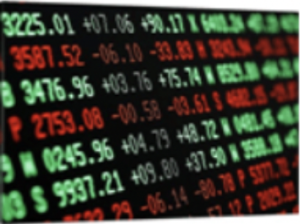
Prime scrap tags fall in February, HMS and shredded mostly flat
US busheling scrap prices fell this month, while HMS and shredded grades remained largely unchanged.

US busheling scrap prices fell this month, while HMS and shredded grades remained largely unchanged.

The market for February scrap shipments has largely been settled. The prices for scrap across the country went down very modestly. The price tags on #1 Busheling and bundles went down $10 per gross ton (gt) in most districts. The exceptions were Chicago and Detroit, which fell $30/gt, to $480 and $475, respectively.
The sun decided to greet us on the second day of the Tampa Steel Conference 2024. Attendees from the chillier northern parts of the continent got their dose of winter sunshine. But whatever the temps, it was inside the conference room where things really heated up. January is always a time to make sense of the year that’s just passed, and look out for the trends for the year ahead.

The state of the US scrap market is not very well understood, according to the dealer trade. It seems steelmakers in several regions are still looking to buy scrap, several sources told SMU.
The capacity for EAF steelmaking is growing both in the US and abroad. Ferrous scrap supply has never been more important. A lot of people have viewed the scrap industry as old-fashioned and resistant to change. However, the same forces affecting the steel and other industries are also at play in recycling.

When I started in the scrap business many years ago as a rookie trader in Luria’s Cleveland office, I saw an industry composed of family-owned businesses stretching across a great industrial nation.

The spread between hot-rolled coil (HRC) and prime scrap prices narrowed slightly this month, according to SMU’s most recent pricing data.

Domestic scrap prices ended up down slightly after a roller coaster of trading in January, scrap sources told SMU.

Turkish scrap import prices increased last week with CRU’s assessment for HMS1/2 80:20 at $423 per metric ton (t) CFR, up by $7/t week over week (w/w) but down $2/t month over month (m/m). This was driven by a pickup in buying activity.

For two consecutive months, the initial scrap prices didn’t attract the amount of scrap that mills needed. A Detroit area mill came in at $460 per gross ton (gt) for busheling, which was down $50 from last month and down $20 on shredded and plate and structurals (P&S). But I guess they did not know at the time another mill in the district bought scrap sideways. Needless to say, that order filled right away. SMU could not find any supplier who sold at down $50.

It’s been a sloppy start to the year for domestic hot-rolled (HR) coil and ferrous scrap markets. One of the loudest things to happen in HR this year might be something that didn’t happen at all. Namely, Nucor didn’t follow competitor Cleveland-Cliffs higher when Cliffs announced a price hike to start the year.

After a holiday period that saw HR futures volumes somewhat muted in December, the first week of January brought with it increased interest reflected in higher volumes.

US scrap prices for January remained unsettled as of early Thursday afternoon, according to market sources.
A Detroit-area mill entered the scrap market on Friday afternoon with the following offers: The Chicago area followed suit: Mills in the Great Lakes region sensed there was ample supply of most grades. Also, they all bought heavily last month and so had sufficient inventories to make this move, market participants said. Still, the move surprised […]

After a brief decline in the price of scrap for the Turkish market, which peaked in December at approximately $424 per metric ton (mt) for HMS 80/20, the market has bottomed at $405/mt on cargoes from Europe.

As we look back at the scrap market for 2023, it basically followed its normal seasonal pattern. Most of the disruptive geopolitical events that riled ferrous raw materials occurred in 2022. So, with those things out of the way—or settling down at least for now—2023 resumed its normal pattern.

Over the last two decades, the role of the scrap broker has been diminished in favor of steel mills purchasing their scrap requirements directly from scrap dealers.

US scrap prices shot up in December and are expected to continue their rise in January, market sources told SMU.

A large Detroit-area scrap buyer entered the market on Wednesday at significantly higher prices than a month earlier.

The export market for ferrous scrap has been strengthening over the last month by a sizable margin.

US scrap prices are expected to rise in December, industry sources told SMU.

Turkish scrap import prices increased for a third consecutive week.

Virginia-based metal recycler Greenwave Technology Solutions revealed its financial troubles in its 10-Q quarterly report released on Nov. 14.
The importation of basic pig iron has allowed EAF steelmakers to implement thin-slab casting technology to make drawing-quality flat-rolled sheet over the last 30 years.
The spread between HRC and prime scrap prices widened considerably this month, according to Steel Market Update's most recent pricing data.

Domestic scrap prices rose in November month over month for all grades that SMU covers, market sources said.

The iron and steel foundry industries consume about 17% of the ferrous scrap in the US each year. They purchase several grades of scrap in common with steelmakers, such as shredded and turnings. But, most of the grades are much more restrictive than what larger mills require.

Steel Dynamics Inc. (SDI) scrap subsidiary OmniSource has acquired a 55-acre rail-served tract near the Port of Houston to expand its metal recycling operations along the Gulf Coast.

The LME aluminum three-month price was unchanged on the morning of Nov. 3 and was seen trading at $2,235 per tonne.
A large Detroit-area scrap buyer has settled scrap prices for November, with busheling, shredded, and plate and structurals (P&S) all notching gains vs. October, a scrap source told SMU.